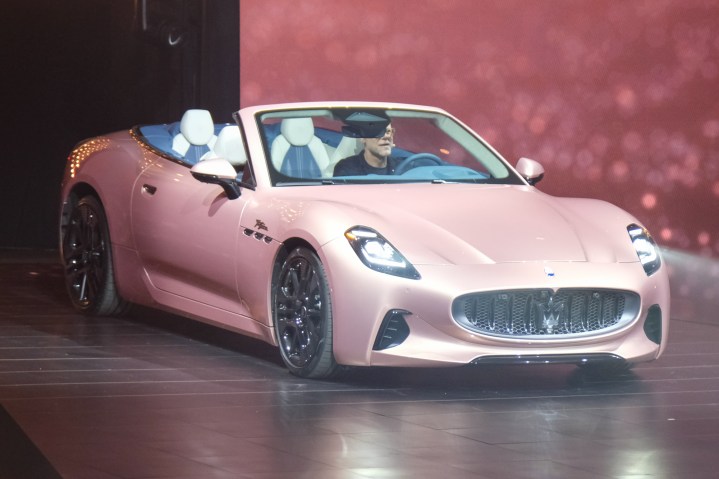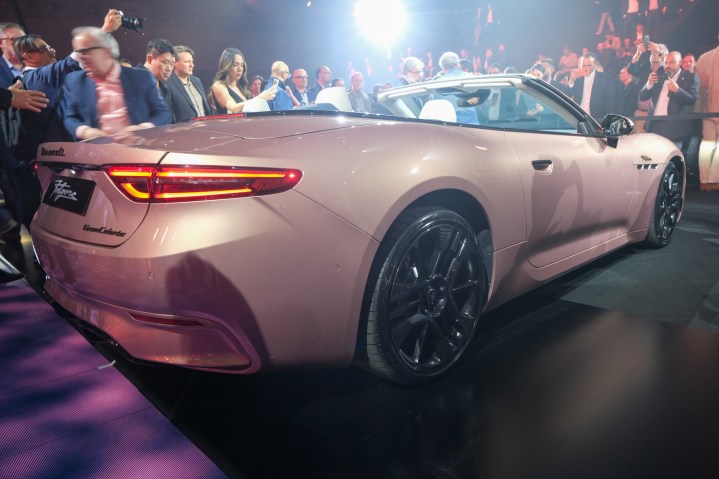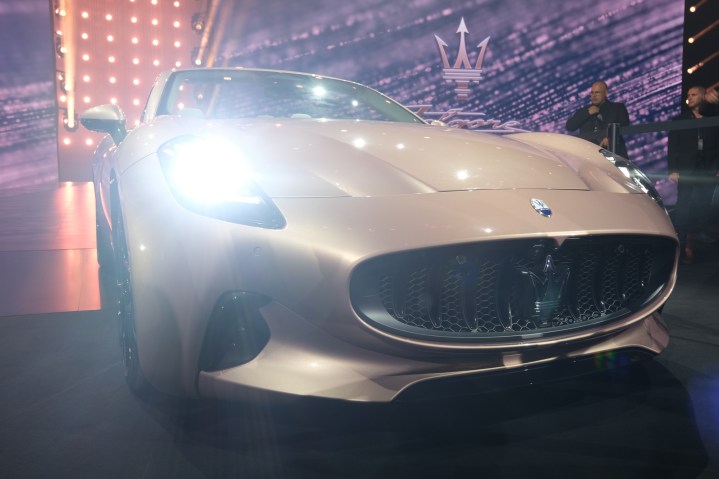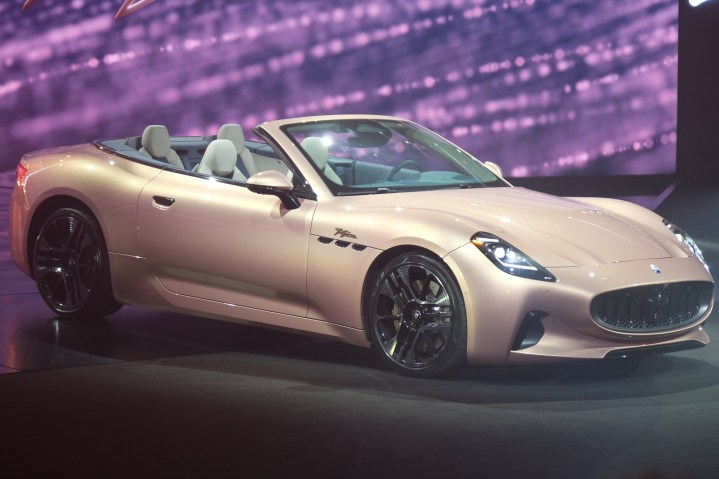
Maserati is adopting electrified vehicles with open arms, and while that could potentially signal an identity crisis for the luxury Italian brand, that’s probably a good thing in the long run.
The company recently took the wraps off of the new Maserati GranCabrio Folgore, which is essentially a convertible version of its already released GranTurismo Folgore electric car. The new EV is its third go at electrified vehicles so far, and it flew us out to Rimini, Italy, to witness the big reveal in person.
The car itself has a lot going for it — and it’s not all just looks. It sits on Maserati’s own 800V Atlantis architecture, which allows it to DC fast charge at up to a solid 270 kilowatts, and to get from 20% to 80% in around 18 minutes. It has a range of between 260 and 278 miles, depending on the model you go for — which isn’t amazing, but it is pretty good.
It’s fast too. It has three motors, which can combine to deliver 996 lb-ft of torque — and get from 0 to 60 miles per hour in an impressive 2.8 seconds. In other words, it beats the majority of EVs out there in terms of pure speed, which you would hope for given the price point. (We don’t yet have pricing for the new car, but it won’t be cheap. Some estimates peg its starting price at over $200,000, though that’s not all that surprising for a Maserati.)

But it also looks stunning. At the Folgore Day event in Rimini, Maserati also showed off the other vehicles in the Folgore range, including the GranTurismo Folgore, which is not a convertible, and which I’m a little more partial to in terms of design. But that doesn’t take away from the fact that the GranCabrio Folgore is still a beautiful car. It’s infused with Maserati’s design sensibilities, both inside and out. Maserati design chief Klaus Busse specifically pointed out the face of the car, noting that it wasn’t completely faceless like some other EVs, which allows for air intake through the front grille to cool the motors and battery — something that electric vehicles do still need, even if they don’t need as much cooling as their gas-powered counterparts. The bronze color that Maserati is showing off in online images is particularly good-looking — however, we were only able to see a pink version. It also looks great, though it’s perhaps not my first choice of color.
It’s easily one of the better-looking electric cars out there right now, though. That’s not to say there aren’t other great-looking EVs. There are. But there are also some downright ugly ones, and some that look good, but not quite as luxurious. That’s really the point that Maserati is going for here — luxury. Customers have a range of customization options, both inside and out, and while I wasn’t able to sit in the car, the interior looked very premium.

Maserati isn’t forgetting about performance, of course. As mentioned, this car can accelerate to 60 miles per hour in 2.8 seconds. But when you can find much cheaper cars from brands like Kia that get close to the same level of acceleration, performance in general is starting to feel a little commoditized.
Because performance is starting to feel so much less important for EVs as a point of differentiation, brands like Maserati may have to create new ways to differentiate. Much of the conversation around electric vehicles has, so far, treated them like big appliances. It makes sense. To most buyers, that’s what they are, and as a tech publicatio,n we here at Digital Trends are perhaps more apt at looking at the range and charging speed than the real personality of actually driving a car. But for a brand like Maserati, personality is more important than for the likes of Kia and Hyundai — and it can be hard to differentiate personality in a world where all electric vehicles, at least to some extend, feel the same behind the wheel.

But that also begs the question: In an era of electric vehicles, how will the likes of Maserati message their personality, and more importantly, build their personality into their cars? For now, it seems to be through design, luxury feel, and attempting to recreate some of the experience of driving a Maserati with synthesized engine sounds. But as the brand also attempts to find a home with a younger buyer, that may not be enough. Hopefully, we’ll get a chance to drive the car in the near future to find out.
Editors' Recommendations
- Tech giant reveals nice price for new EV to take on Tesla
- Here’s how Ford will give EV customers Tesla Supercharger access
- This couple just did something remarkable in an EV
- Don’t let these hidden EV fees catch you off guard (or deter you)
- These new NASA EVs will drive astronauts part way to the moon (sort of)


